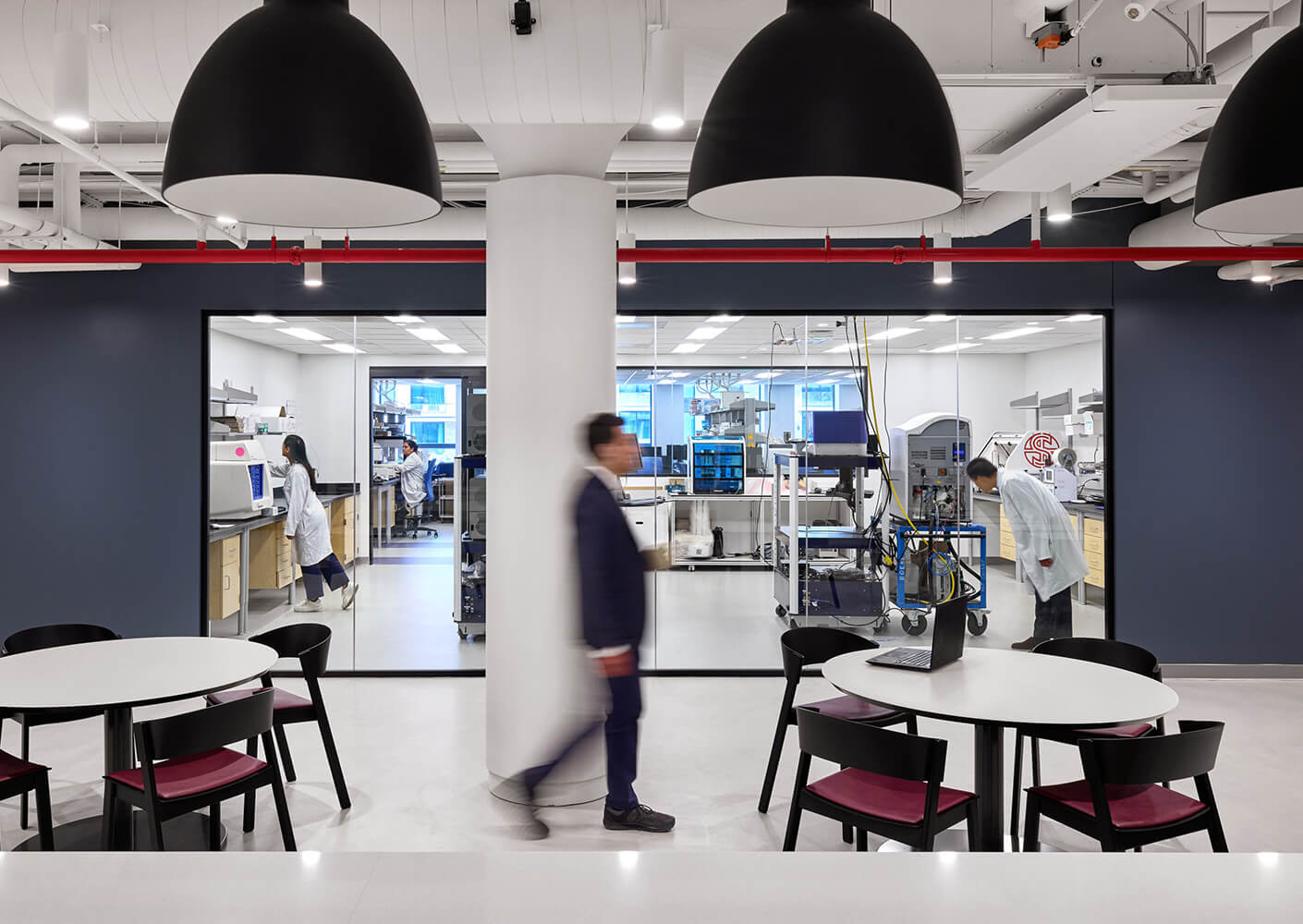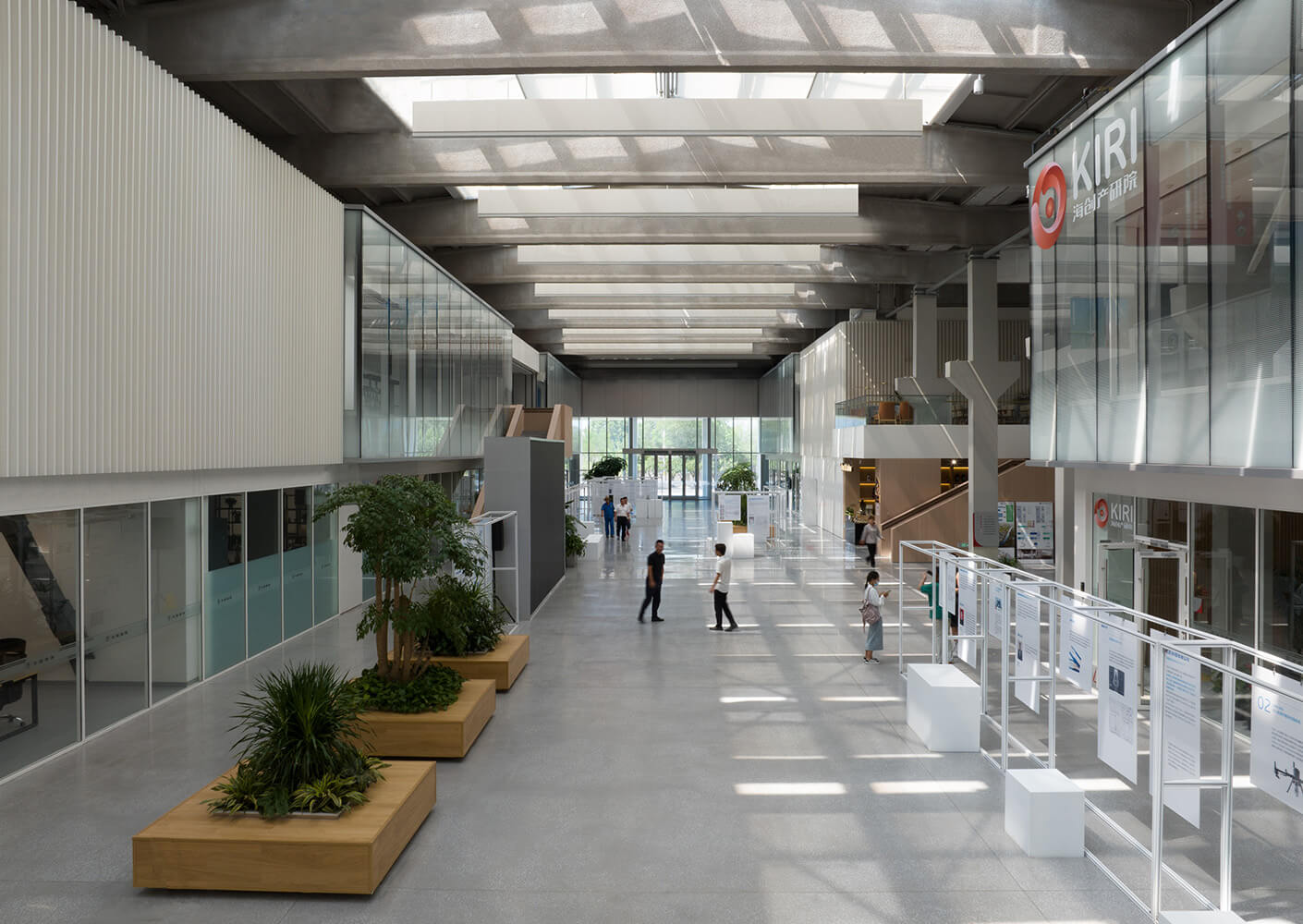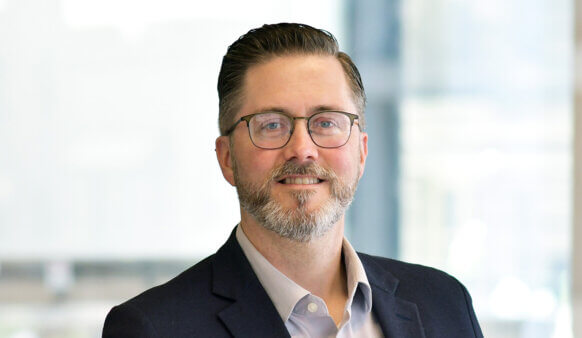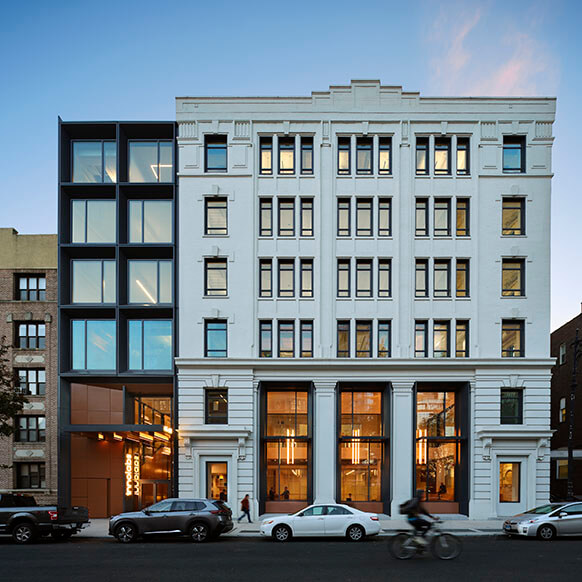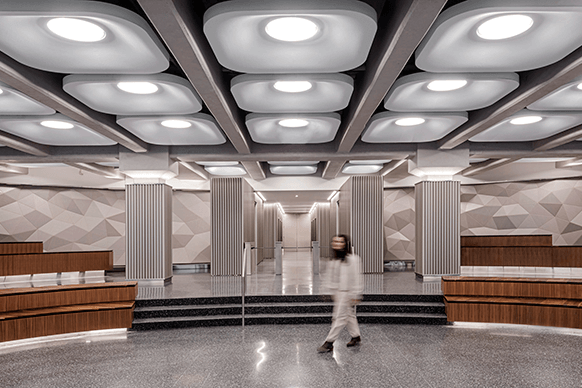Adaptive reuse, market pressures, and the evolution of life science environments
Malone’s return comes at a critical time. Science and technology markets are shifting under economic pressures, evolving tenant needs, and emerging tools like AI. “Successful design in this sector now demands more than cutting-edge labs,” says Bill Harris, regional director at Perkins&Will. “It requires foresight, flexibility, and the ability to translate financial realities into value-driven facilities solutions for research, development and advanced manufacturing. Matt’s expertise will help us create the best solutions for our clients.”
In dense urban centers like New York and Philadelphia, repositioning existing buildings for life science use has emerged as both a challenge and an opportunity. “Adaptive transformation can reduce carbon impact, lower costs, and support smart growth—but it’s complex,” says Malone. “Not every structure can meet the technical demands of research. Knowing how to assess and navigate that, especially in a tight lending environment, is critical.”
Malone also points to other dynamics such as shrinking tenant footprints, a rebalancing of venture capital, and the push for cities to strengthen their life science infrastructure through incentives. His leadership will shape a number of key Perkins&Will projects, including NYU Langone BioLabs at Innolabs and the forthcoming BATWorks project at the Brooklyn Army Terminal.
“We’re fortunate to have Matt back on our team,” says Robert Clemens, managing director of Perkins&Will’s New York studio. “His experience gives him a rare perspective that’s incredibly valuable to our clients. We’re looking forward to putting that insight to work across the region as we continue to shape spaces for discovery and innovation.”


